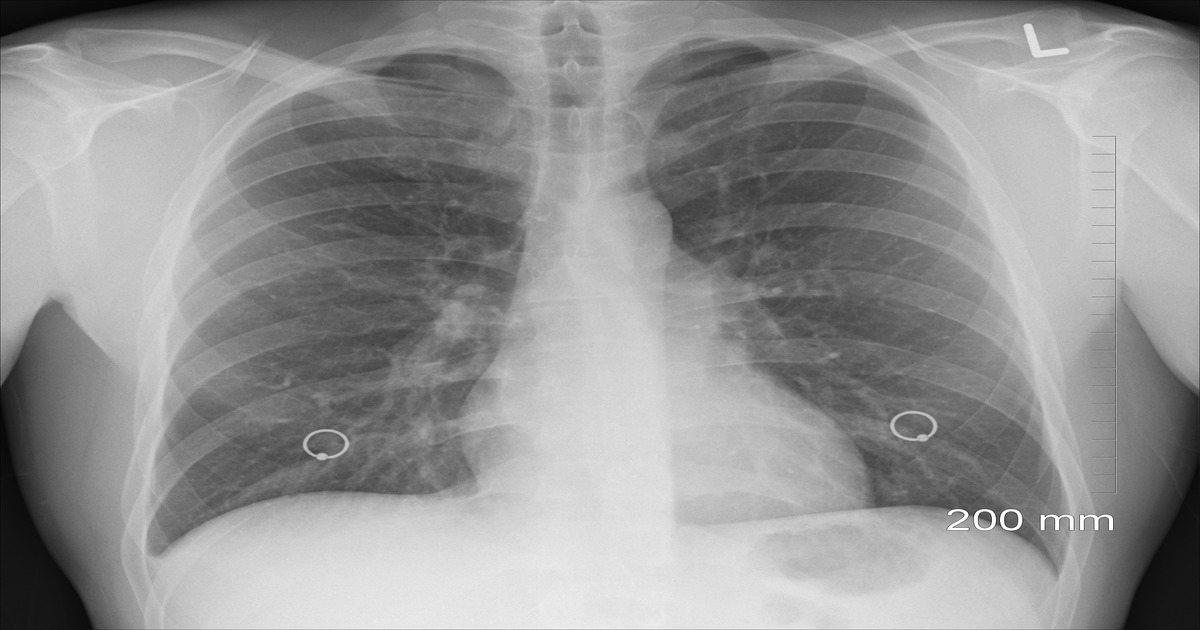Author: Lisa Hyde-Barrett

Medical Team Supports Mesothelioma Patients in Making Care Decisions
According to a recent survey, 64% of respondents believe they could be making more decisions about their health and wellness. This national survey emphasizes the importance of empowering individuals with information within a dynamic healthcare environment. The survey by the National Council of Patient Information shows how important communication and trust is with your medical team. But unfortunately, more and more patients diagnosed with mesothelioma turn to the internet. This one-sided approach to learning about the disease can lead to unrealistic expectations, for both the patient and family.
This past week a man who had surgery a year ago, a pleurectomy, for malignant pleural mesothelioma was re-admitted to the hospital. His course has been complicated over the last year, and emotionally it has been a challenge. He has undergone chemotherapy, and fell and sustained bruises while being on a blood thinner. After surgery, both he and his wife felt that progress was way too slow. He was disappointed in how he felt. He wanted more out of himself physically and looked upon his slow progress as a failure on his part.
He was readmitted and found to have metastatic disease – his mesothelioma had spread. He was offered the options best suited him by his team. He could restart chemotherapy or he could elect to go home with hospice. Armed with his options, he was going home to think about his choices. Did he want to go through another round of chemotherapy or did he want to choose hospice? This is a very personal decision that he and his family had to make.
In order to make healthcare decisions, all questions must be answered, the information must be understood, and all communication must be clear. Whatever decision the patient makes will be fully supported by the medical team. As his journey continues with mesothelioma, the choices he makes will impact he and his family. What are his values? What does he value in his life? His decisions made with his family, and his medical team, will be based on what he wants.
Know more about Mesothelioma and how you can deal with it.

Mesothelioma Nurse Explains Pleural Effusion
Obtaining a diagnosis of malignant pleural mesothelioma is difficult. The diagnosis is often made after many other more common diseases are ruled out. One of the presenting symptoms can be pleural effusion, or excess fluid in the chest cavity. It is a common symptom with one study placing it as high as 90 % in a group of patients diagnosed with malignant pleural mesothelioma.
What is pleural effusion? The pleura is a thin layer that surrounds the lungs. The outer layer is the parietal pleura, and the inner layer is the visceral pleura. Lubricating the layers in the space in between is a small amount of fluid called the pleural fluid. The pleural fluid functions to lubricate the two layers so they can slide against each other when we breathe. In healthy people, the pleural fluid is usually about a teaspoon. With a pleural effusion, the fluid builds up and separates the lung from the chest wall, making it difficult to breathe. Some of the more common conditions that a person could have to cause pleural effusion are pneumonia, heart failure, low level of protein in the blood, cirrhosis of the liver, rheumatoid arthritis, systemic lupus erythematosus (SLE), and mesothelioma.
Shortness of breath is most often the reason many patients diagnosed with malignant pleural mesothelioma seek medical attention. For many patients, initially, they undergo a procedure to drain the fluid called a thoracentesis. Many patients who are eventually diagnosed with mesothelioma have this procedure done more than once. Once the diagnosis is made and treatments begin, the effusions can be less of an issue as the symptom is managed with the disease.
When pleural effusions continue to be an issue due to the advancement of disease, or whatever the reason may be, there are options for managing the patient‘s discomfort. One of these options can be a catheter placement in the chest that allows the patient to drain the fluid at home and not come to the hospital for the thoracentesis procedure. Insertion of these catheters can often give the patient and family more time to spend at home as opposed to going to the hospital. If you or your loved one is in the situation that requires frequent thoracentesis procedures, this could be an option.
This past week a patient brought up placement of a pleural catheter as he was considering it. He had weighed the pros and cons and decided to delay placement because it was summertime and he enjoyed going into the water. As mesothelioma becomes a chronic disease it is gratifying to see options that patients have depending on their needs and their quality of life goals.
Photo Credit: Dr. James Heilman via Wikipedia
Memorial Services Honor Mesothelioma Victims
Once a year the International Mesothelioma Program at Brigham and Women’s Hospital in Boston holds a memorial service for patients who lost their battle to the disease. It is not easy for families to come back to a place that had such an emotional connection for them and their loved ones, who lost their battle with mesothelioma.
For caregivers and families alike it is a very emotional day. For the staff, it is one of the most important programs we can attend each year. It reminds all of us what has been lost to this disease. It allows us to put a face and names to those who have fought mesothelioma, to become invigorated to work harder in memory of these who have died, and to reconnect with families who have a lost a piece of their heart to a cruel cancer.
[expert_info author=”Tagore”]“Say not in grief that she is no more but say in thankfulness that she was. A death is not the extinguishing of a light, but the putting out of the lamp because the dawn has come.” [/expert_info]Memorial Day is another day set aside for remembering and honoring those who have died. We reflect and pay our respect and gratitude to those who have sacrificed their lives for our country. Whether it be in battle defending our country, or an insidious disease that those who lived are diagnosed with years later. Whether it is their loss of life from the effects of agent orange or asbestos exposure, those who sacrificed for our country deserve our unending gratitude.
Approximately 30% of mesothelioma patients who are diagnosed are U.S. veterans. With the time of exposure to asbestos to the time of developing mesothelioma taking from 15-60 years, this disease is a killer of our service men and women.
Memorial Day and the annual Memorial Service at Brigham and Women’s are held this time of year every year, and every year we pause and vow never to forget those who have died.
Who is the Patient?
With such a devastating disease as mesothelioma you would think it would be easy to pick out who is the patient. Not necessarily. At a recent mesothelioma conference I attended there was an empty seat at a table with two couples who were already seated. I joined them, and as our conversation progressed it became apparent that both couples had one partner who had mesothelioma and the other who was the very supportive spouse. I had to ask both couples who was the patient.
The first couple were in there 70’s, friendly, and both appeared very fit. The man was the patient. He had recently undergone a pleurectomy and suffered some complications, but he was now doing well. His life is full of activities and he said he tires more easily than before surgery. His wife spoke of how she encourages him to rest every day, but some days he won’t give in. The man said he is cautious about how much weight he will lift. He tries not to lift anything larger than 10 pounds.
The second couple at the table were in their early 60’s. The woman was the mesothelioma patient. She had been diagnosed over two years ago, had never had surgery, and she had been treated with chemotherapy. She reported that she had never experienced shortness of breath, and overall she felt very well. Her biggest complaint was fatigue. It was not constant but on occasion she felt wiped out. Her appetite was good, and she looked wonderful. In a strange way she was grateful for the diagnosis. Mesothelioma had given her and her husband time to do what they wanted now- not in the future. They had done some traveling, visited their children, and made it a point to enjoy life to the fullest now.
Mesothelioma is a rare disease. It is also a disease that affects everybody differently. Every mesothelioma tumor is different, as is every patient and family that it affects. Knowing these facts, and seeing it play out with two couples at a mesothelioma conference, was very inspiring to me.
Watching these two couples, who did not know each other before the conference, sharing stories and supporting each other, is what being part of a sharing, supportive community is all about.

Mesothelioma Nurse Remembers Doug Larkin, Co-Founder of ADAO
There are few people that are passionate leaders for change. These leaders see something that needs to be changed or a situation that needs to be exposed and they take their zeal and passion and make it happen. The mesothelioma community lost one of those leaders this month: Doug Larkin.
In 2004, he and Linda Reinstein co-founded the Asbestos Disease Awareness Organization. Based on a personal loss of his father-in-law, he took his grief and turned it into positive advocacy. He hoped to prevent asbestos exposure and to someday eliminate all asbestos-caused diseases. ADAO was personal to Doug.
I had the pleasure of meeting Doug at an ADAO conference a couple of years ago. We were impressed with his passion and his eloquence. He was a force, and I remember being impressed with his dedication to banning asbestos. He has made a difference, and left this world a better place for being in it.
“Unparalleled champion for truth, justice, and an asbestos ban”; “Bold brilliant and courageous” are the words being used to describe Doug on the ADAO web site.
In addition to fighting to ban asbestos so that the dying from asbestos related diseases would stop, Doug had a personal battle with ALS, Amyotrophic Lateral Sclerosis. Rest in peace, job well done.
Photo Credit: ADAO
Free Mesothelioma Patient & Treatment Guide
We’d like to offer you our in-depth guide, “A Patient’s Guide to Mesothelioma,” absolutely free of charge.
It contains a wealth of information and resources to help you better understand the condition, choose (and afford) appropriate treatment, and exercise your legal right to compensation.
Download Now